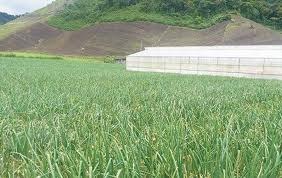 NAMIBIA’S coarse grain production is expected to be about 23 per cent lower than last season due to floods and heavy rainfall earlier this year, the Namibia Early Warning and Food Information Unit (Newfiu) has said in its latest crop prospects and food security situation report.
NAMIBIA’S coarse grain production is expected to be about 23 per cent lower than last season due to floods and heavy rainfall earlier this year, the Namibia Early Warning and Food Information Unit (Newfiu) has said in its latest crop prospects and food security situation report.
"Most crop fields were waterlogged and some completely submerged by continuous heavy rainfall and flood water that marked the second part of the rainy season," Newfiu said last week.
Crop production for the current year is forecasted at 166 992 metric tonnes: 53 799 tonnes of white maize, 41 166 tonnes of pearl millet, 5 769 tonnes of sorghum and 16 258 tonnes of wheat.
Although this is about 23 per cent less than last year, the estimated crop will be seven per cent bigger than the 12-year average.
More good news is that commercial areas are expected to deliver a 2010-11 crop which is about one per cent bigger than that of last year, and 47 per cent higher than the 12-year average.
Looking at regional production, Newfiu said a "prolonged harsh dry spell" in February and March "has shattered all good hope for a better harvest" in Caprivi this year. Maize, pearl millet and sorghum crops are expected to shrink by 20 per cent, 16 per cent and nine per cent respectively.
In Kavango, the majority of farmers succeeded in cultivating about 93 per cent of their total total crop fields, Newfiu said.
As a result pearl millet production should be five per cent higher than last season, while the sorghum harvest should be eight per cent bigger. The maize crop, however, is expected to decrease by about three per cent.
According to Newfiu, the Oshana, Omusati, Ohangwena and Oshikoto regions all produced below average this year.
In Omusati, the pearl millet crop is 57 per cent lower than last season, while sorghum is down by 21 per cent.
Although most farmers in Oshana managed to cultivate 100 per cent of their total crop field, "this was all in vain", Newfiu said.
The pearl millet harvest is 75 per cent smaller, while the sorghum crop shrunk by 83 per cent.
Crop production in Ohangewena dropped "drastically" following floods from the Cuvelai basin and above normal rainfall. The pearl millet crop dropped by 49 per cent, and sorghum production is 31 per cent lower.
Compared to the other three northern regions, Oshikoto experienced a better season, Newfiu said. The pearl millet crop decreased by 23 per cent, while the sorghum harvest dropped by 11 per cent.

Deprecated: strpos(): Passing null to parameter #1 ($haystack) of type string is deprecated in /home/agriviek8Qv/agriviet.net/public_html/wp-includes/comment-template.php on line 2522